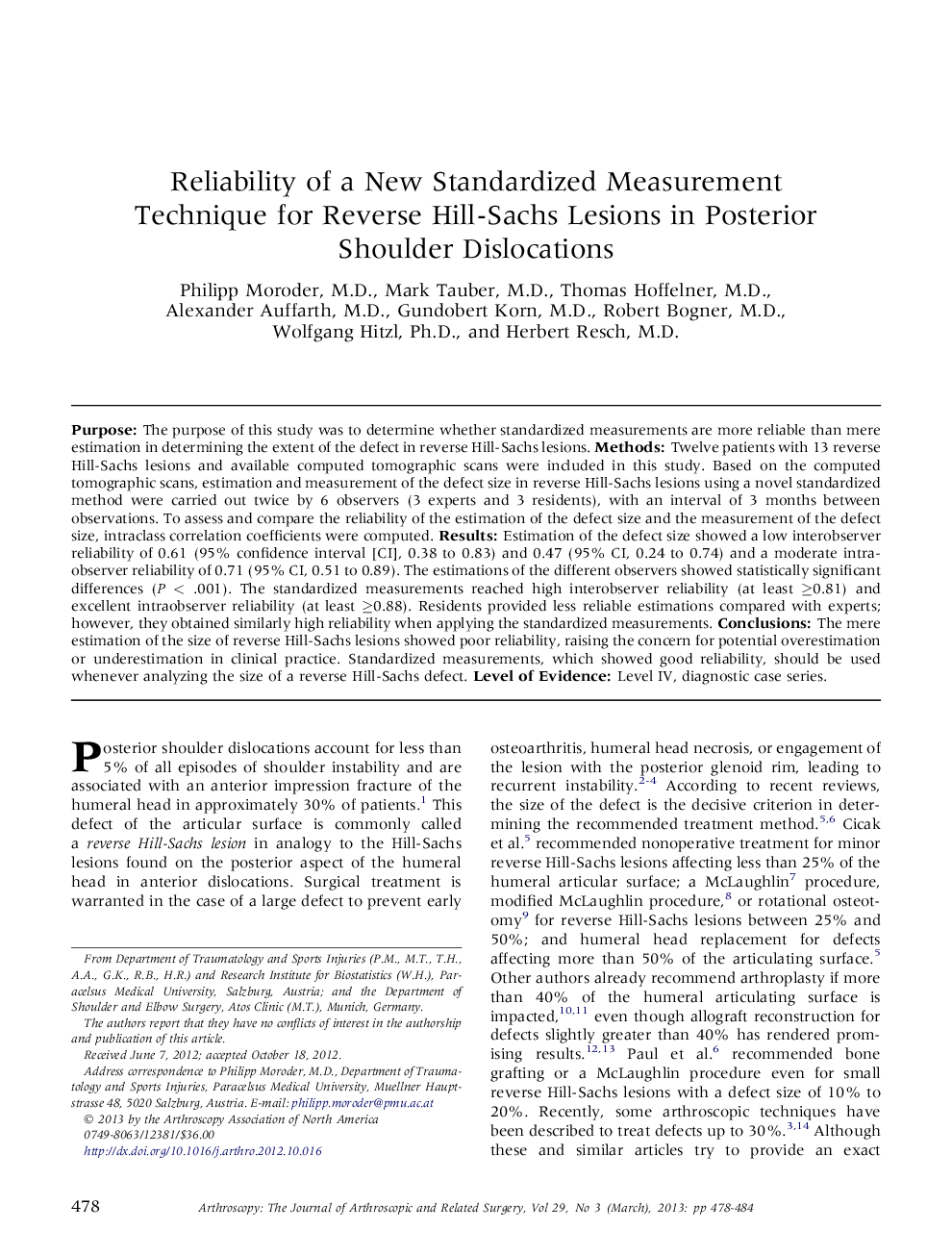| Article ID | Journal | Published Year | Pages | File Type |
|---|---|---|---|---|
| 4044074 | Arthroscopy: The Journal of Arthroscopic & Related Surgery | 2013 | 7 Pages |
PurposeThe purpose of this study was to determine whether standardized measurements are more reliable than mere estimation in determining the extent of the defect in reverse Hill-Sachs lesions.MethodsTwelve patients with 13 reverse Hill-Sachs lesions and available computed tomographic scans were included in this study. Based on the computed tomographic scans, estimation and measurement of the defect size in reverse Hill-Sachs lesions using a novel standardized method were carried out twice by 6 observers (3 experts and 3 residents), with an interval of 3 months between observations. To assess and compare the reliability of the estimation of the defect size and the measurement of the defect size, intraclass correlation coefficients were computed.ResultsEstimation of the defect size showed a low interobserver reliability of 0.61 (95% confidence interval [CI], 0.38 to 0.83) and 0.47 (95% CI, 0.24 to 0.74) and a moderate intraobserver reliability of 0.71 (95% CI, 0.51 to 0.89). The estimations of the different observers showed statistically significant differences (P < .001). The standardized measurements reached high interobserver reliability (at least ≥0.81) and excellent intraobserver reliability (at least ≥0.88). Residents provided less reliable estimations compared with experts; however, they obtained similarly high reliability when applying the standardized measurements.ConclusionsThe mere estimation of the size of reverse Hill-Sachs lesions showed poor reliability, raising the concern for potential overestimation or underestimation in clinical practice. Standardized measurements, which showed good reliability, should be used whenever analyzing the size of a reverse Hill-Sachs defect.Level of EvidenceLevel IV, diagnostic case series.
